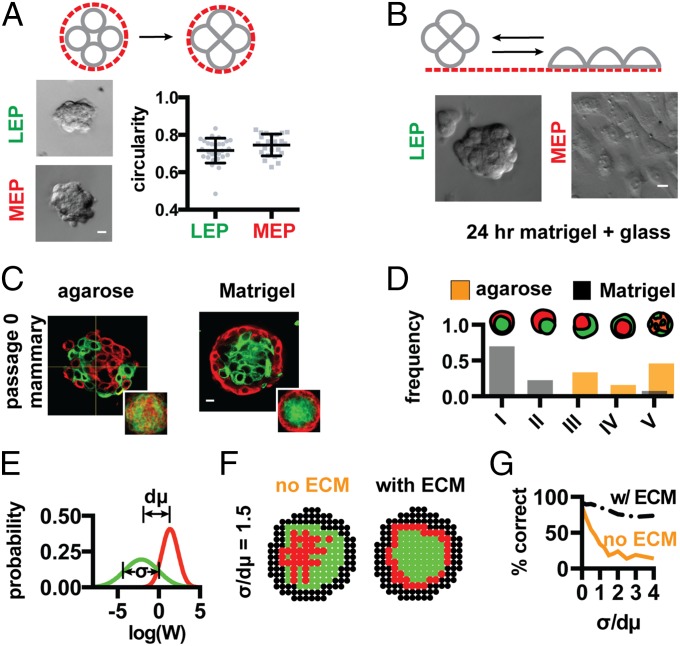Fig. 4.
An adhesive tissue boundary supports self-organization among populations of cells that are heterogeneous in their cohesive properties. (A) Circularity of pure aggregates of uncultured human primary mammary LEP and MEP (n > 23). (B) Aggregate spreading assay of pure uncultured LEP and MEP. (C) Representative images and average keratin intensity profiles (Inset, n = 20) for uncultured primary human mammary epithelial cells self-organizing in agarose (Left) and Matrigel (Right). Red, K14; green, K19. (D) Distribution of tissue architectures for self-organizing uncultured primary cells in Matrigel (gray, n = 53) and agarose (orange, n = 56). (E) Log-normal homotypic interaction energy distributions for LEP (green) and MEP (red) (σ/dμ = 1.5). (F) Simulated self-organization of LEP (green) and MEP (red) in agarose (Left) and Matrigel (Right), but with σ/dµ = 1.5. (G) The relative efficiency of self-organization to an identical tissue architecture (configuration I) as a function of cell-to-cell variability using a strategy of binary cell–ECM adhesion (black; WMEP–ECM = 2 × WMEP–MEP) or differential cell–cell cohesion alone (orange). (Scale bars, 10 µm.)

